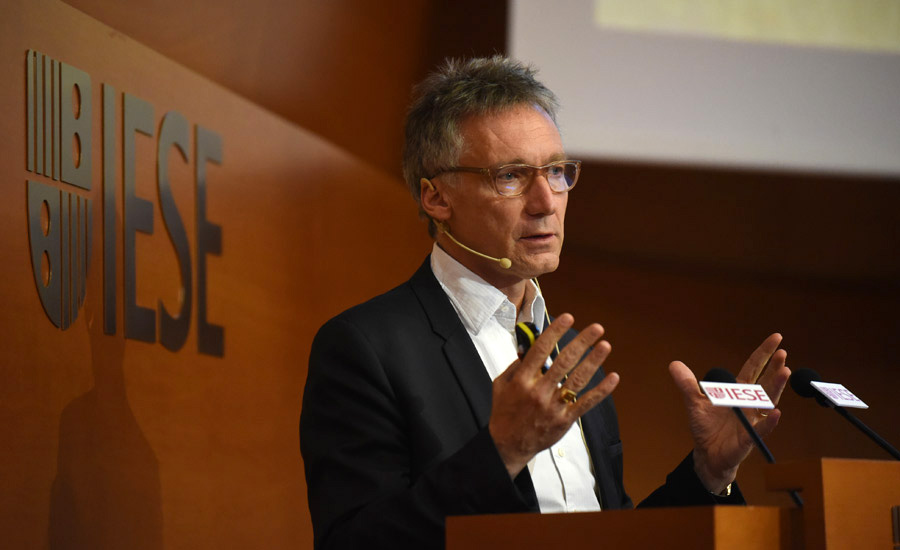
“Storytelling amplifies your message,” says Geoffroy de la Bourdonnaye, president of French luxury fashion house Chloé. “But with social media, the storytellers aren’t always controllable.”
This lack of control presents problems but also offers opportunities. “If we say something, you might believe it. If someone else says it, you’re more likely to. Individuals are more trustworthy than brands.”
De la Bourdonnaye spoke on IESE’s Barcelona campus on March 15 as part of IESE’s 16th Fashion & Luxury Goods Industry Meeting. The meeting was held in collaboration with ISEM Fashion Business School, and directed by Professor Fabrizio Ferraro. Founding President of the Industry Meeting, Professor Pedro Nueno, chaired a panel discussion. Joining them via videoconference from the school’s New York campus were Daniel Saynt, CEO and co-founder of Socialite Collective; Professor Tom Handley from Parsons New School for Design; and Eric Wilson, fashion news director of InStyle magazine.
Influencers – established bloggers and people with vast numbers of followers on Instagram and other social media platforms – are the new drivers of fashion sales. “Brands have always had phenomenal imagery to share but it has been too staged, too stale and too flat,” said Handley. “Rich lifestyle imagery shot on or by an influencer has proven to be more engaging.”
Crashing the Gates of Fashion
The messengers have changed the message, says Saynt, whose agency handles many of the industry’s top influencers. “For a long time, real women asked for real representations of beauty. Everyone was photoshopped to perfection and there was a backlash. At the same time, influencers’ reach has exploded and the message on social media has become ‘It’s OK to look like this.’ Then people with the same body type would buy the same clothes. That had never happened before.”
While Wilson works at “traditional” glossy magazine, he also writes for its online version and across all its social media channels. “There was a turning point in the industry around 2009 when there was resistance on side of traditional media. Editors thought young influencers were crashing the gates of fashion and disrupting the places of those who’d spend decades there. They thought it would be a fad. Now the whole industry is transformed. We’ve all adapted in how we tell those stories.”
Runway events were now designed to include “Instagram moments” where models would stand still long enough for social media influencers in the audience to take and share photos, says Wilson. Traditional runway events themselves were being displaced by road shows, in which luxury brands spend five-figure sums per influencer to capture their attention exclusively for 48 hours.
Life in the Fishbowl
These new rules of engagement have had an impact on every element of brands’ business culture.
“It has affected model castings. After years of calls for diversity, it took social media to make the significant change. Now if designers don’t have diversity in their castings, they’ll be policed in real time and called on it. It’s hard to deliver a message that’s not accurate when you’re on a platform with millions of people. They’ll keep you honest,” said Wilson.
“We live in a fishbowl,” added De la Bourdonnaye. “And it’s not just in fashion. Any company whose internal messages differs from its external message is doomed. To achieve authenticity, you have to make sure that everyone within your team is on board. Don’t block them from speaking but make sure they speak the language of the brand.”